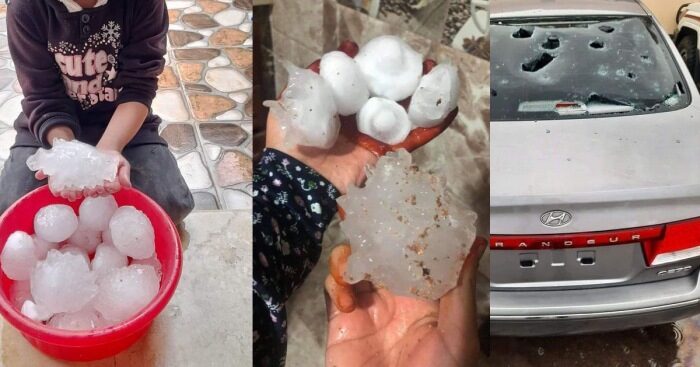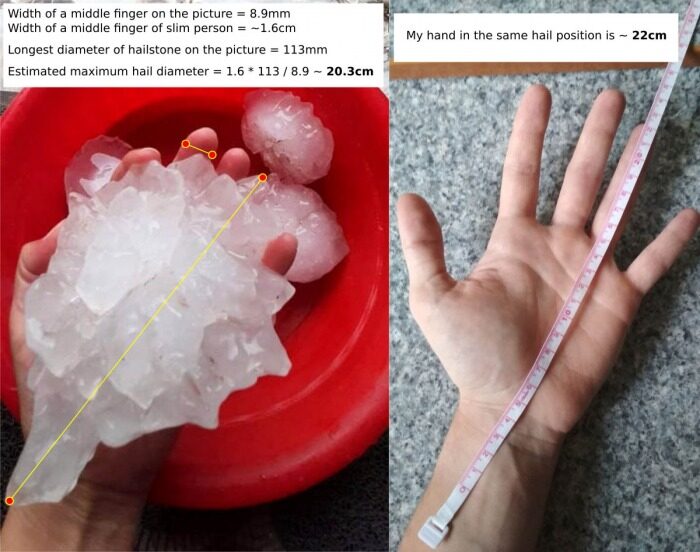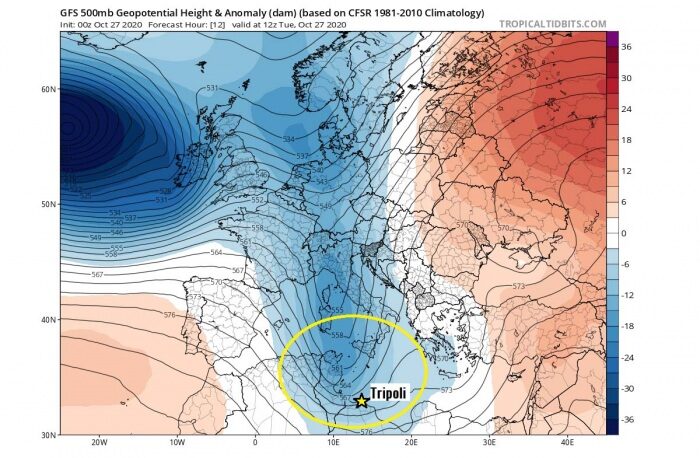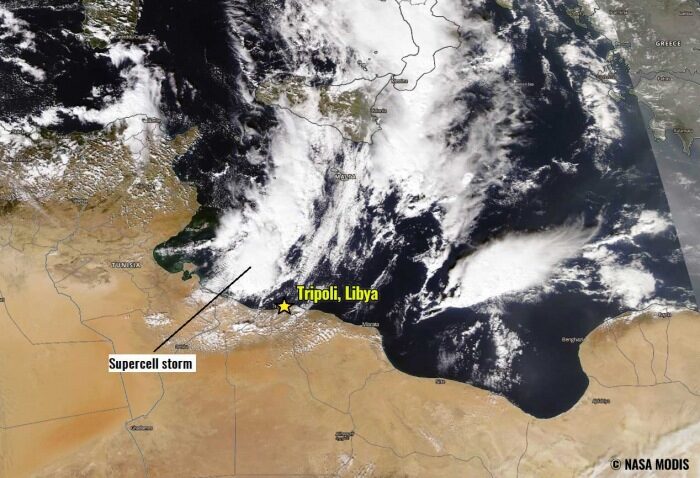Such hail size would definitely fit into the world's Top 3 giant hailstone events reported globally. Besides the Vivian (south Dakota) hailstorm from 2010 and the so-called 'gargantuan' hailstorm in Argentina in 2018.
EVENT ANALYSIS
The event occurred on Tuesday afternoon (Oct 27th) when an upper trough was moving across the Mediterranean. A trough axis with a frontal boundary was moving from west to east across the southern portions of the Mediterranean sea.
And one of the storms along the front brought an intense organized storm in the early evening hours. Social media were soon flooded with numerous giant hail reports!
Libya'nın kuzeyinde Misrata'da oldukça iri dolu yağışı, 27 Ekim 2020, 15-16 GMT.
— Ayhan Erdoğan (@ayhanerd) October 28, 2020
by @saleh_alazzaz @fadi_al_sham @AJEWeather pic.twitter.com/FuZNuhNaAZ
Monster giant hail in Libya yesterday, Oct 27th. Thanks to محمد جموم for the report - posted with permission. pic.twitter.com/x1qqcyYyH9
— severe-weather.EU (@severeweatherEU) October 28, 2020
Conditions ahead and along the front very strongly supportive of severe weather, with very high to extreme instability within a strongly sheared environment. The winds ahead of the trough, strengthening with height, favored organized convective storms. Including rotating, supercell storms.
A band of convective storms was moving along the front, as seen by the NASA MODIS satellite image below. A discrete supercell storm can be analyzed at the tail-end of the storm.
Tail-end storms tend to be the strongest and most organized in the line as they have the best conditions available for their organization.
Based on the clouds visible over northern Libya, there was likely a north-northeasterly moist inflow advecting from the warm Mediterranean sea further inland. This normally provides backing winds near the surface, which supports an important ingredient, the wind shear.
(Read more here)









Reader Comments
Whatever. Big hail - certainly more dangerous than C-1984.
R.C.
We had our state election today. The incumbent is labour same as the Dan Andrews in Victoria, so lots of lockdowns. Qld premier just opened up Qld borders except if you come from Sydney or anywhere in Victoria. Don’t expect any change.
And the death rate from Covid (even including all the deaths with) is .0035%.
Hard or hard .. is the choice. FreeWilling IT